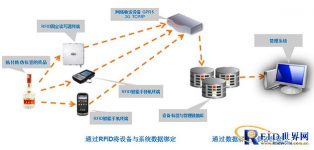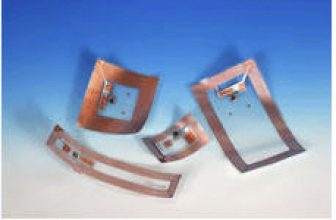
Huacai RFID dynamic anti-counterfeiting and value-added application
[ad_1]
1. System background
In today’s society, driven by interests, counterfeit and inferior products are increasingly rampant in the market. Due to the relative lag of anti-counterfeiting technology, many products have not been effectively supervised in essence. It is conservatively estimated that counterfeit products cause more than 100 billion U.S. dollars in losses worldwide each year. Counterfeiting is almost omnipresent, and the most serious problem is the production of high-profit and fast-selling counterfeit cigarettes, famous wines, and luxury goods. Take high-end wine as an example. If you enter “fake wine Wuliangye” in Baidu search terms, you will get 23,800 relevant news. How to take effective measures to combat counterfeiting has become a top priority.
Currently, the more widely used anti-counterfeiting technologies in the market include laser and paper watermarking technology, ink technology, laser holographic image anti-counterfeiting technology, barcode technology, and telephone code technology applications. However, because these traditional anti-counterfeiting technologies are easy to be copied, they have severely disrupted the legitimate market competition mechanism and brought huge losses to regular manufacturers and consumers. The market urgently needs high-tech anti-counterfeiting technologies and technologies that can effectively monitor the market. product. The current maturing RFID technology has exactly this advantage. It can effectively improve the supply chain of products and solve problems such as product counterfeiting. It will be the best choice for high-end product anti-counterfeiting.
RFID is the abbreviation of “Radio Frequency Identification” in English, and the Chinese name is radio frequency identification, which is a non-contact automatic identification technology. The most basic RFID is composed of three parts: electronic tags (Tag), middleware, and readers. The schematic diagram of RFID system integration application is as follows:

Figure 1: Schematic diagram of RFID system integration application
2. System introduction
Huacai’s RFID online anti-counterfeiting system based on dynamic anti-counterfeiting marks is an invention patent certified by the State Intellectual Property Office of China. Its patent number: ZL201010186267.6. The anti-counterfeiting system adopts the combination of random dynamic identification technology and reversible encryption algorithm to form a dynamic random identification code. When the RFID tag is copied or unauthorized reading and writing data, the existing anti-counterfeiting information code will automatically become invalid, and new anti-counterfeiting information will be generated at the same time Encoding, the server will update the database accordingly to ensure the anti-counterfeiting safety of the product. The product ID and part of the product information are encrypted using the AES encryption algorithm. The encryption key is obtained by the Hash function calculation from the master key and the serial number of the electronic tag, so that each electronic tag has a different encryption key in addition to a random identification code. The key ensures that the random identification code is synchronized and protected when it is attacked. More advanced is that it can use the combination of X.509 certificate authentication protocol and 3DES encryption algorithm in the process of querying the authenticity of product information through server communication. After identity authentication, the anti-counterfeiting identifier client and the anti-counterfeiting query client generate corresponding The session key of the user is authorized to query the authenticity of the user. This process effectively prevents the reuse and copying of the electronic tag, and more importantly, prevents the counterfeiting of the identifier and the server.
The application flow chart of Huacai anti-counterfeiting system is as follows:

Figure 2: Application system flow chart
3. Features and advantages of Huacai RFID anti-counterfeiting system
Security features
a) Customers can use their own reader to verify the reading. Each time the reader is verified, the reader will read a different “verification value”, and then through the Internet to the product manufacturer’s database, and then to the “decoding system” Determine whether it is genuine.
b) The data anti-counterfeiting encryption algorithm adopts the internationally recognized AES and ECC encryption algorithms, which are difficult to crack, so as to ensure that the data will not be stolen.
c) When the label is opened, the label will be destroyed and cannot be restored.
Economic features
a) Labels conforming to the general EPC C1 GEN2 specification for readers and anti-counterfeiting label specifications can be used in warehouse logistics management in addition to the anti-counterfeiting function of a dedicated label, that is, anti-counterfeiting and warehouse logistics can share the same label.
b) The RFID smart phone reading and writing solution greatly reduces the cost of RFID readers, and the popularization of RFID reading and writing terminals to end customers makes it possible for customers to independently verify. Only the anti-counterfeiting system that can be verified by customers has practical value and vitality. Anti-counterfeiting system.
System advantages
a) The anti-counterfeiting system can run through the entire product life cycle data collection and information processing such as production, warehouse management, wholesale and retail, customer verification, after-sales service, etc. The entire process is carefully monitored, which can effectively realize anti-counterfeiting and can be easily extended to RFID supply chain management , Retail smart stores, retail e-commerce B2C and O2O applications.
b) Use RFID technology to complete the monitoring of the entire product production, circulation and sales, after-sales and other processes, realize visual management, reduce unnecessary links and losses in the logistics process, and reduce the safe inventory and operation of each link in the supply chain cost.
c) Through the monitoring of product terminal sales, not only real-time sales data can be obtained, but also valuable consumer behavior data can be obtained to help merchants adjust the structure of sales products, improve product shortages, and obtain higher customer satisfaction and loyalty.
Four, system value-added applications
a) Develop a supply chain informatization strategy facing the trend of the future Internet of Things: RFID supply chain management solutions
b) Develop a distribution channel informatization strategy facing the future Internet trend: B2C and 020 e-commerce solutions
c) Develop offline retail informatization strategies for future automation trends: RFID smart store system solutions
V. Summary
Huacai’s RFID online anti-counterfeiting system based on dynamic anti-counterfeiting identification is a 100% anti-counterfeiting system. It represents the current technological development trend of the RFID anti-counterfeiting industry. It can not only enhance my country’s independent innovation ability in RFID anti-counterfeiting system technology, but also effectively combat To prevent counterfeiting and inferior products, to ensure product safety, and to establish a complete product traceability system.
[ad_2]





